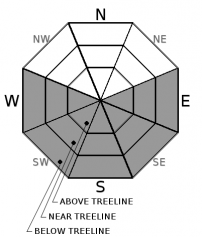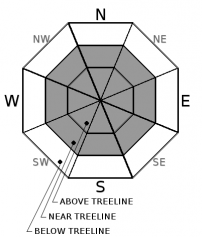| Saturday | Saturday Night | Sunday | |
|---|---|---|---|
| Weather: | Sunny | Partly cloudy | Partly cloudy with a slight chance of showers in the afternoon |
| Temperatures: | 42 to 48 deg. F. | 27 to 33 deg. F. | 40 to 46 deg. F. |
| Mid Slope Winds: | East | Variable | Variable |
| Wind Speed: | 10 to 15 mph with gusts to 30 mph decreasing to light winds in the afternoon | Light | Light |
| Expected snowfall: | 0 | 0 | 0 |
| Saturday | Saturday Night | Sunday | |
|---|---|---|---|
| Weather: | Sunny | Partly cloudy | Partly cloudy with a slight chance of showers in the afternoon |
| Temperatures: | 39 to 45 deg. F. | 28 to 33 deg. F. | 37 to 43 deg. F. |
| Ridge Top Winds: | East | Variable | Northwest |
| Wind Speed: | 20 to 35 mph with gusts to 65 mph this morning decreasing to 15 to 25 mph with gusts to 45 mph in the afternoon | Light | 10 to 15 mph with gusts to 35 mph |
| Expected snowfall: | 0 | 0 | 0 |

























